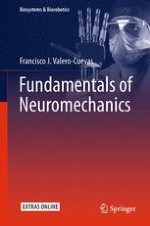2016 | OriginalPaper | Chapter
6. The Neural Control of Musculotendon Lengths and Excursions Is Overdetermined
Author : Francisco J. Valero-Cuevas
Published in: Fundamentals of Neuromechanics
Publisher: Springer London
Activate our intelligent search to find suitable subject content or patents.
Select sections of text to find matching patents with Artificial Intelligence. powered by
Select sections of text to find additional relevant content using AI-assisted search. powered by
